|
|
|
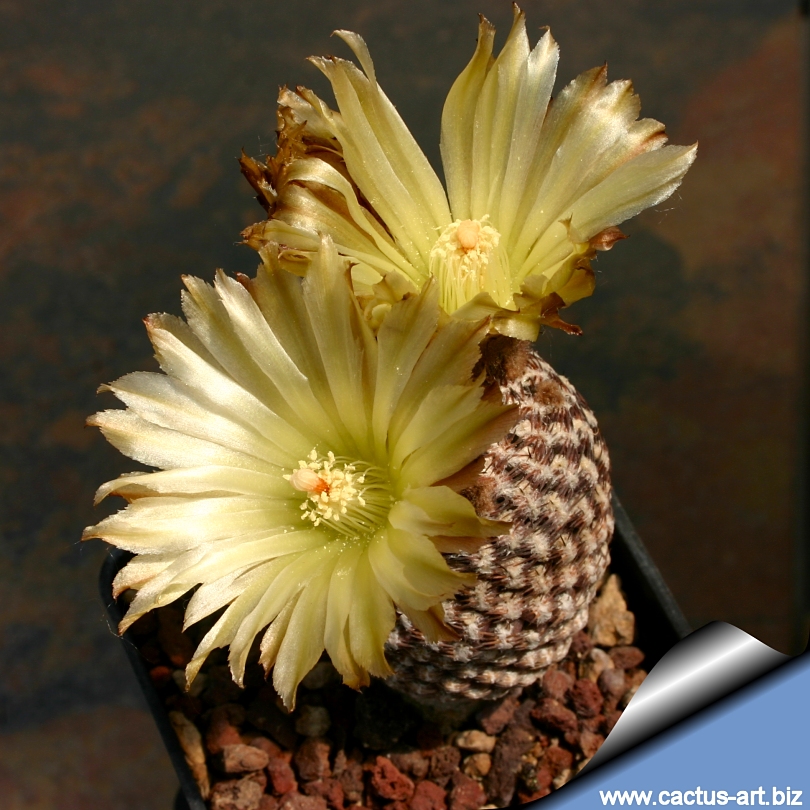
This is a slow
growing, finger size plant.
Very nice but rot prone on its own roots.
|
|
Description:
Tiny
globose or finger-like stem, slowly growing atop a thick, underground
taproot,
with a
constriction between the stem and the root. eventually
becoming somewhat
elongated in cultivation.
Stem:
Slow
growing, up to 3-5 cm across, 2-6
cm tall,
brown-olive-grey tones
Tubercles : Smaller tubercles than
the type;
Areoles:
Grey woolly.
Spines: Short
copper-brown to black coloured
radials
of small size -2 to 3 mm,
Roots: Forms
a
tuberous root system with (usually) a very
large
carrot-like root
of at least 7 cm of length
Flower: Funnelform;
buds
hairy with brown
wool.
Fruit:
Large red
clavate,
wrapped in white
wool.
Phenology: Flowers
already when young,
synchronised flowering
of the whole plants
took place over one or two days, and remain open for about three
or four days.
Blossoming time: late spring.
|
|
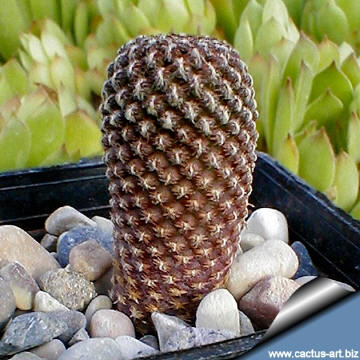 |
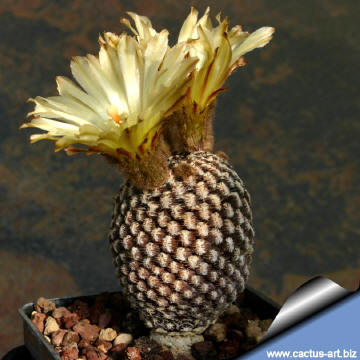 |
|
. |
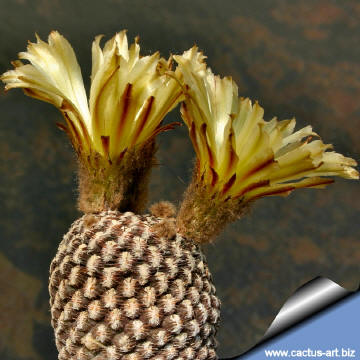 |
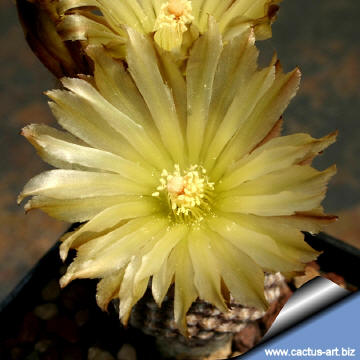 |
|


Advertising
|
|
|
|
Family:
Cactaceae
(Cactus
Family)
Eriosyce napina
ssp. lembckei
(F.Ritter)
F.Kattermann 1994

Distribution: Coastal Chile (Region III Atacama) Road from Vallenar to Huasco and
nearest areas along the coast of the ocean .

Conservation status: Listed in
CITES Appendix II
Etymology:
The
genus name
"Eriosyce" derives from the Greek words
“Erion (εριον)” meaning “wool”
and “Sykos” meaning “fig (a fruit)” .
(The genus name implies: “woolly
fruits”).
The
species name
“napina”
derives from the
Latin
“napus” meaning "turnip” plus the adjective suffix for nouns "inus"
meaning "belonging to or resembling" (The specific name implies:
“resembling a turnip”)
The subspecies
epithet "lembckey"
has been named named in honour of "Hans
Lembcke" Germany expert and author of Chilean species of
cacti.
Synonym:
- Neochilenia lembkei Backeb. (Nom. inval.) 1959
- Thelocephala lembckei (Backeb.) F.Ritter (Nom. inval.) 1980
- Eriosyce napina subsp. lembckei Katt. 1994
- Eriosyce napina var. lembckei Katt. 1994
- Neoporteria reichei fa. lembckei
Neoporteria reichei
|
|
|
|
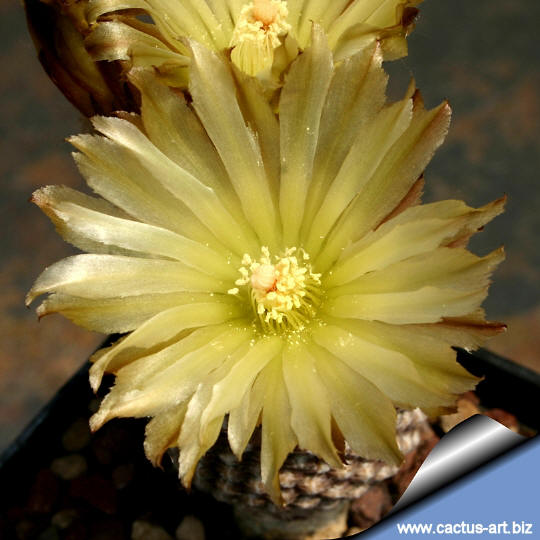
Cultivation:
Have thick
taproot and are
susceptible
to
over-watering, sometimes are
grafted to avoid
root
rot problems. Likes warmth (recommended minimum
winter temperature 5° C) But plant kept perfectly dry can easily
survive to winter night temperatures below 0° C (In our
greenhouse no damage with -10° C for a few hours in winter
2002-2003).
Sun Exposure: Suited for
sunny-brightly exposure; can
tolerate
light shade.
Cultural Practices: Suited for
airy exposures. Needs deep pot
and good
drainage to accommodate its
tap root.
Keep dry in
winter.
Propagation: Seeds or
graft. Seeds can be sown in the spring or summer. The seedlings
should not be disturbed until they are well rooted after which
they can be planted separately in small pots.
Photo of
conspecific taxa, varieties, forms and cultivars of E. napina.
(This
Taxon has lots of synonyms,
with several controversial varieties and
subspecies, and comprises a multitude of
different forms)
|
|